Commentaries
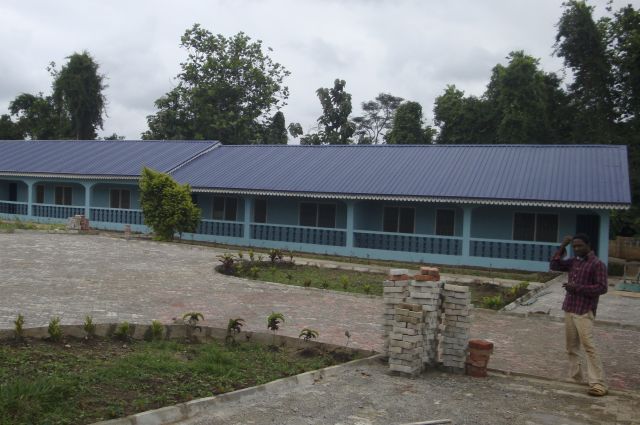
Can vernacular design features make Nigerian housing more sustainable?
Cordelia Osasona (Obafemi Awolowo University) considers whether and how traditional architecture can be harnessed and combined with modern approaches in southwestern Nigeria to improve environmental, cultural and technological sustainability.

Why urban spaces need to be reimagined from an intersectional perspective, incorporating the voices and experiences of women
Cities are hubs of economic activity and cultural vibrancy, however, urban growth policies and city governance that fail to consider gender and poverty have exacerbated socio-economic disparities, exclusion, and segregation. Nourhan Bassan (GamingX) discusses some of key themes from her forthcoming book "The Gendered City". She argues that it is imperative to understand the historical context of urban design, to critically examine gender disparities in cities, and to advocate for women's rights in shaping and accessing urban spaces.

by Matti Kuittinen (Aalto University & the Nordic authority group working for climate declarations for buildings 2020-2023)
For mitigating the built environment's large carbon footprint, regulation within the next 10 years is needed in all countries. The Nordic countries have been co-developing climate policies for buildings since 2018 and are already seeing the positive outcomes from joint efforts. COP28 can apply these principles and lessons elsewhere. To prevent duplication of effort in each country, international collaboration with climatically and culturally similar countries can be beneficial.

By Alexander Passer, Thomas Lützkendorf, Rolf Frischknecht (representing IEA EBC Annex 89)
The built environment contributes 40% of anthropogenic greenhouse gas emissions, is massively affected by the consequences of climate change and can itself be part of the solution. It is a cause, a victim and a solution at the same time and therefore urgently requires actions by COP28 and national governments. A specific GHG budget for national building stocks including a clearly defined reduction pathway towards net zero GHG emissions is needed, in parallel with a legal binding requirement to limit GHG emissions in the life cycle of individual buildings.

By Rihab Khalid (University of Cambridge)
COP28 must create transformative change to ensure gender equality and align with the framework of the UN's Sustainable Development Goals (SDGs). Gender equality, a cornerstone of this agenda, holds a critical lens to examine and address the intersecting crises of climate change and social inequity. Climate change has differential impacts on men and women, with the latter often bearing the disproportionate burden of climate-related impacts and vulnerabilities. Although women play a critical and transformative role in both climate adaptation and mitigation, they continue to face substantial challenges and disparities in terms of sustainable development.
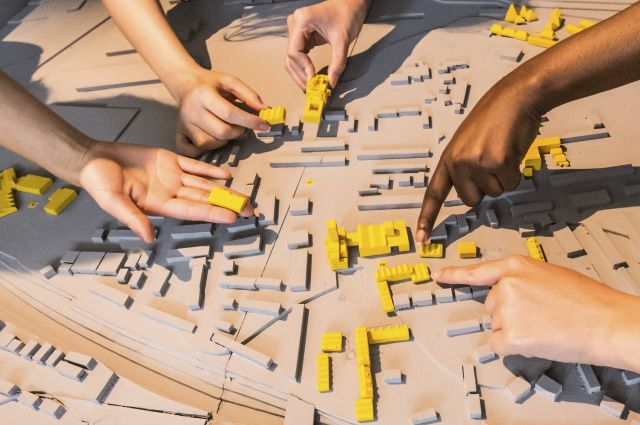
Specialist toolkits can help the built environment professions to design urban spaces with gender equality
In the past, planning and design decisions have resulted
in creating places that make the lives of women harder than men. Karen Horwood and
Charlotte Morphet (Leeds
Beckett University) discuss the use of toolkits that address gender equality in
town planning. They propose that toolkits
could help to achieve change and inclusivity in processes across all the built
environment professions.
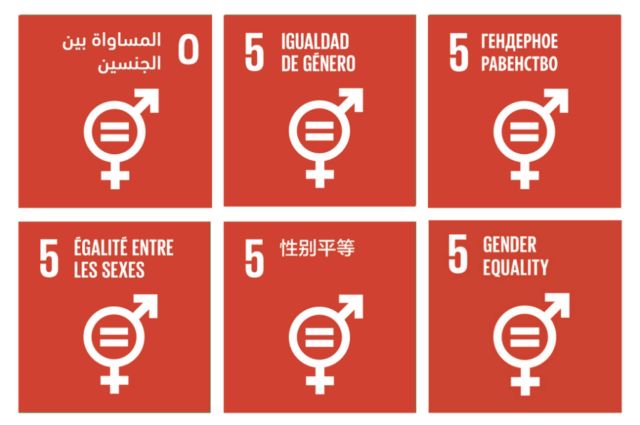
Cities are beginning to address gender inequality and successful examples show what can be achieved
Jua Cilliers (University of Technology Sydney & the Commonwealth Association of Planners) explores how addressing gender disparities can create cities that are inclusive, safe and functional for all their inhabitants. Gender inequity intersects with access, mobility, safety, health, climate resilience and security of tenure. Women and other marginalized gender groups face barriers in accessing public services, navigating through cities and staying safe.

Is managed retreat or abandonment an appropriate alternative if investment in building resilience is no longer possible?
When thinking about the future of our cities in the context of the ongoing climate crisis, what insights arise from the collapse and abandonment of pre-modern cities? Dan Penny (University of Sydney) considers what lessons these historical events have for modern societies, for our policies and planning.
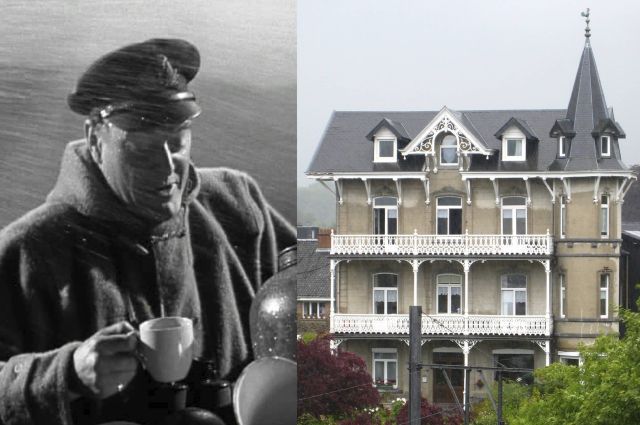
Why lessons from vernacular buildings need to be rediscovered and transferred into better practice.
Robyn Pender (Whethergauge Ltd) argues that to reduce our dependence on energy to deliver resilient, comfortable and healthy buildings, we must recover vernacular knowledge of 'pre-carbon' buildings, i.e. buildings that existed before widespread fossil fuel exploitation.

Involving women in urban development processes and decisions will make cities better for everyone.
Elin Andersdotter Fabre (UN Habitat) and Tove Levonen (Shared City Foundation) explain why cities need to be more inclusive for women. The UN Habitat 'Her City' project provides a participatory toolkit and process to include women in urban planning, design and development.

A forthcoming Buildings & Cities special issue will examine ways to identify and disrupt ill-suited approaches to urban adaptation. Societies need a more pluralistic, inclusive approach to make adaptation work.
Urgent climate adaptation action is needed in cities all around the world, but progress is slow, and responses tend to be technocratic. Vanesa Castán Broto (University of Sheffield), Marta Olazabal (Basque Centre for Climate Change & Ikerbasque) & Gina Ziervogel (University of Cape Town) explain why disruptive adaptation narratives are needed to align the interests of multiple actors and achieve meaningful change.
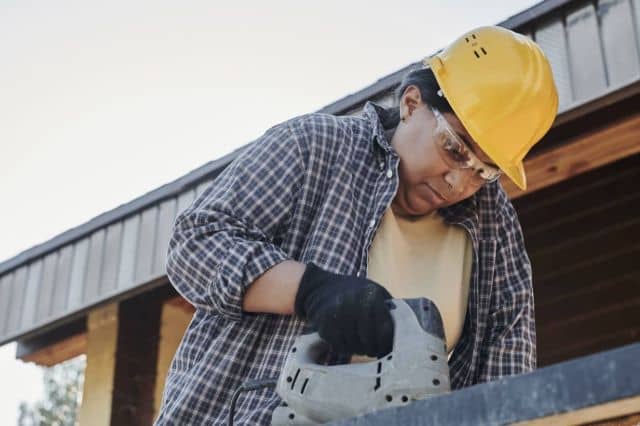
Government legislation and procurement are being used to influence the private sector's diversity and equality practices.
Tessa Wright (Queen Mary University of London) describes how public procurement can be used to create a more diverse construction workforce. Initial findings from a Buying Social Justice research project help explain how countries can improve the diversity of their construction industries.

How can governments advance adaptive solutions for keeping cool during hot weather?
Brian Dean and Elizabeth Wangeci Chege (Sustainable Energy for All) respond to the Buildings & Cities special issue Alternatives to Air Conditioning and explain why thermal comfort is not only a construction industry problem to solve but needs to be placed in the policy agenda on global warming. Thermal adequacy is still not understood as an essential need for human survival and that governments have an essential role.

What would an energy transition research agenda embracing intersectionality, equality and equity look like?
Tom Hargreaves and Nickhil Sharma (University of East Anglia) comment on contributions of the Buildings & Cities special issue Energy, Emerging Technology and Gender in Homes on the role of gender in technology development and the energy transition. This must be broadened further to social justice issues. A failure to do so risks fuelling resistance and pushback to new and emerging energy technologies. Three key avenues for future research and practices for a just energy transition and emerging technologies are set out.
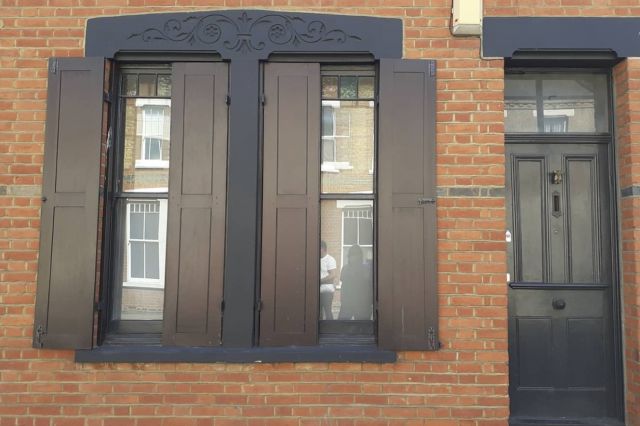
Reducing the need for air conditioning is necessary and feasible. Passive measures for cooling are advantageous.
Julie Godefroy (CIBSE and Julie Godefroy Sustainability) and Anastasia Mylona (CIBSE) respond to the Buildings & Cities special issue 'Alternatives to Air Conditioning: Policies, Design, Technologies, Behaviours'. Proactive options already exist to adapt buildings to hotter summers and extreme events. A balanced approach to risk, complexity and detail is called for.
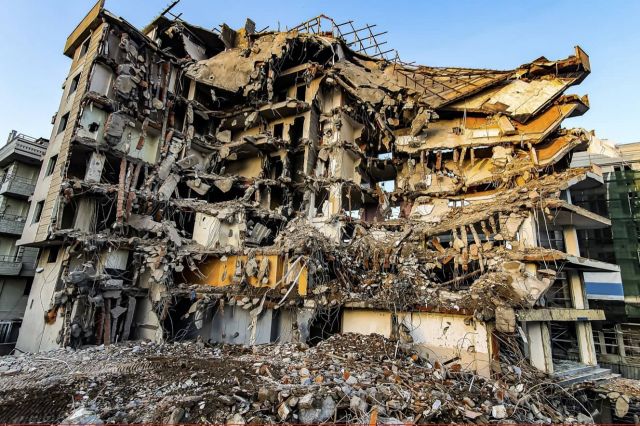
Radical changes are needed in how the construction industry operates and is regulated in order to create safe, healthy homes.
In light of the recent earthquakes in Turkey and Syria, David Oswald and Trivess Moore (RMIT University) reflect on the rights that inhabitants have for buildings to be safe, healthy, comfortable and robust. However, serial and various failings in the construction supply side and its oversight by governments mean greater accountability is needed.

Why emerging (smart) technologies are hindering energy outcomes
As a policy practitioner who leads a national organisation representing households and small businesses in shaping the future of Australia's energy system, Lynne Gallagher (Energy Consumers Australia) responds to the Buildings & Cities special issue, Energy, Emerging Technologies and Gender in Homes. Insights from lived experience reveal blind spots in the design, provision and use of smart tech that adversely affect energy outcomes.
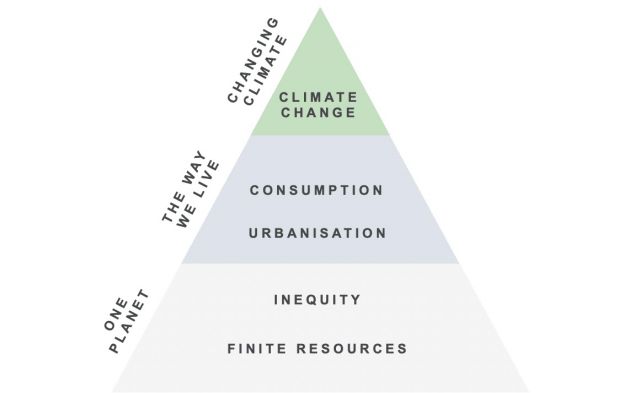
Reducing the need for air conditioning is necessary and feasible.
Edith Blennerhassett (Arup) responds to the Buildings & Cities special issue 'Alternatives to Air Conditioning: Policies, Design, Technologies, Behaviours' . As humane societies, a key aim should be to see the end of deaths due to either heat or cold and to achieve this in a way that minimises the impact on people and planetary health. Actions are highlighted to minimise the need for mechanical cooling.

The drivers for construction management research are too narrow and need to be broadened. A more critical voice would be beneficial.
Roine Leiringer (University of Hong Kong) and Andy Dainty (Manchester Metropolitan University) find the recent B&C special issue, Modern Methods of Construction: Beyond Productivity Improvement, has a worthy (and much needed) aim of providing a critical approach to policy and practice.
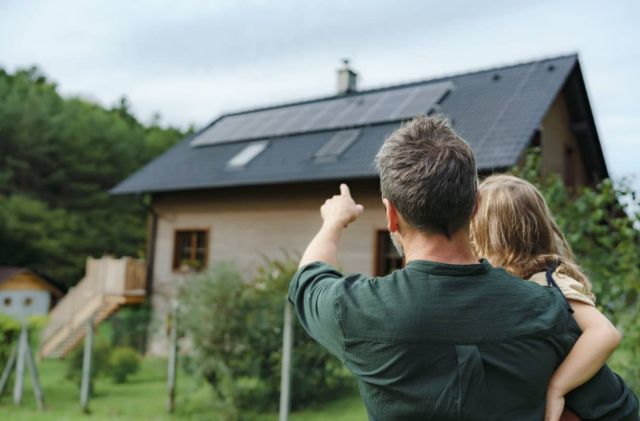
Why accomodating gender & diversity is vital for the widespread adoption of smart energy technologies.
Can renewable and smart energy technologies in the home avoid negative consequences for gender, power, and nature-society relations within the domestic sphere? Olufolahan Osunmuyiwa, Helene Ahlborg, Martin Hultman, Kavya Michael and Anna Åberg comment on 'Masculine roles and practices in homes with photovoltaic systems' (Mechlenborg & Gram-Hanssen, 2022) - published in a recent Buildings & Cities special issue 'Energy, Emerging Tech and Gender in Homes'.
Latest Peer-Reviewed Journal Content
A framework for 1.5°C-aligned GHG budgets in architecture
G Betti, I Spaar, D Bachmann, A Jerosch-Herold, E Kühner, R Yang, K Avhad & S Sinning
Net zero retrofit of the building stock [editorial]
D Godoy-Shimizu & P Steadman
Co-learning in living labs: nurturing civic agency and resilience
A Belfield
The importance of multi-roles and code-switching in living labs
H Noller & A Tarik
Researchers’ shifting roles in living labs for knowledge co-production
C-C Dobre & G Faldi
Increasing civic resilience in urban living labs: city authorities’ roles
E Alatalo, M Laine & M Kyrönviita
Co-curation as civic practice in community engagement
Z Li, M Sunikka-Blank, R Purohit & F Samuel
Preserving buildings: emission reductions from circular economy strategies in Austria
N Alaux, V Kulmer, J Vogel & A Passer
Urban living labs: relationality between institutions and local circularity
P Palo, M Adelfio, J Lundin & E Brandão
Living labs: epistemic modelling, temporariness and land value
J Clossick, T Khonsari & U Steven
Co-creating interventions to prevent mosquito-borne disease transmission in hospitals
O Sloan Wood, E Lupenza, D M Agnello, J B Knudsen, M Msellem, K L Schiøler & F Saleh
Circularity at the neighbourhood scale: co-creative living lab lessons
J Honsa, A Versele, T Van de Kerckhove & C Piccardo
Positive energy districts and energy communities: how living labs create value
E Malakhatka, O Shafqat, A Sandoff & L Thuvander
Built environment governance and professionalism: the end of laissez-faire (again)
S Foxell
Co-creating justice in housing energy transitions through energy living labs
D Ricci, C Leiwakabessy, S van Wieringen, P de Koning & T Konstantinou
HVAC characterisation of existing Canadian buildings for decarbonisation retrofit identification
J Adebisi & J J McArthur
Simulation and the building performance gap [editorial]
M Donn
Developing criteria for effective building-sector commitments in nationally determined contributions
P Graham, K McFarlane & M Taheri
Reimagining circularity: actions for optimising the use of existing buildings
R Lundgren, R Kyrö, S Toivonen & L Tähtinen
Effective interdisciplinary stakeholder engagement in net zero building design
S Vakeva-Baird, F Tahmasebi, JJ Williams & D Mumovic
Metrics for building component disassembly potential: a practical framework
H Järvelä, A Lehto, T Pirilä & M Kuittinen
The unfitness of dwellings: why spatial and conceptual boundaries matter
E Nisonen, D Milián Bernal & S Pelsmakers
Environmental variables and air quality: implications for planning and public health
H Itzhak-Ben-Shalom, T Saroglou, V Multanen, A Vanunu, A Karnieli, D Katoshevski, N Davidovitch & I A Meir
Exploring diverse drivers behind hybrid heating solutions
S Kilpeläinen, S Pelsmakers, R Castaño-Rosa & M-S Miettinen
Urban rooms and the expanded ecology of urban living labs
E Akbil & C Butterworth
Living with extreme heat: perceptions and experiences
L King & C Demski
A systemic decision-making model for energy retrofits
C Schünemann, M Dshemuchadse & S Scherbaum
Modelling site-specific outdoor temperature for buildings in urban environments
K Cebrat, J Narożny, M Baborska-Narożny & M Smektała
Understanding shading through home-use experience, measurement and modelling
M Baborska-Narożny, K Bandurski, & M Grudzińska
Building performance simulation for sensemaking in architectural pedagogy
M Bohm
Beyond the building: governance challenges in social housing retrofit
H Charles
Heat stress in social housing districts: tree cover–built form interaction
C Lopez-Ordoñez, E Garcia-Nevado, H Coch & M Morganti
An observational analysis of shade-related pedestrian activity
M Levenson, D Pearlmutter & O Aleksandrowicz
Learning to sail a building: a people-first approach to retrofit
B Bordass, R Pender, K Steele & A Graham
Market transformations: gas conversion as a blueprint for net zero retrofit
A Gillich
Resistance against zero-emission neighbourhood infrastructuring: key lessons from Norway
T Berker & R Woods
Megatrends and weak signals shaping future real estate
S Toivonen
A strategic niche management framework to scale deep energy retrofits
T H King & M Jemtrud
Generative AI: reconfiguring supervision and doctoral research
P Boyd & D Harding
Exploring interactions between shading and view using visual difference prediction
S Wasilewski & M Andersen
How urban green infrastructure contributes to carbon neutrality [briefing note]
R Hautamäki, L Kulmala, M Ariluoma & L Järvi
Implementing and operating net zero buildings in South Africa
R Terblanche, C May & J Steward
Quantifying inter-dwelling air exchanges during fan pressurisation tests
D Glew, F Thomas, D Miles-Shenton & J Parker
Western Asian and Northern African residential building stocks: archetype analysis
S Akin, A Eghbali, C Nwagwu & E Hertwich
Join Our Community

The most important part of any journal is our people – readers, authors, reviewers, editorial board members and editors. You are cordially invited to join our community by joining our mailing list. We send out occasional emails about the journal – calls for papers, special issues, events and more.
We will not share your email with third parties. Read more

Latest Commentaries
COP30 Report
Matti Kuittinen (Aalto University) reflects on his experience of attending the 2025 UN Conference of the Parties in Belém, Brazil. The roadmaps and commitments failed to deliver the objectives of the 2025 Paris Agreement. However, 2 countries - Japan and Senegal - announced they are creating roadmaps to decarbonise their buildings. An international group of government ministers put housing on the agenda - specifying the need for reduced carbon and energy use along with affordability, quality and climate resilience.
Building-Related Research: New Context, New Challenges
Raymond J. Cole (University of British Columbia) reflects on the key challenges raised in the 34 commissioned essays for Buildings & Cities 5th anniversary. Not only are key research issues identified, but the consequences of changing contexts for conducting research and tailoring its influence on society are highlighted as key areas of action.